
Miscellaneous systems
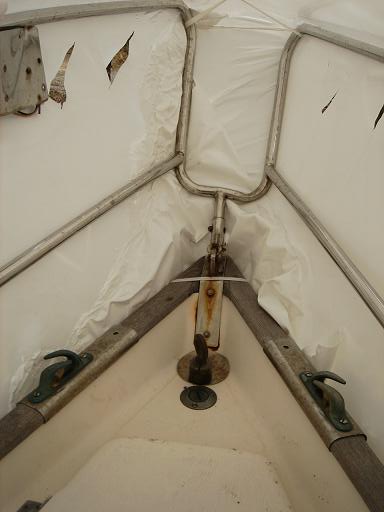
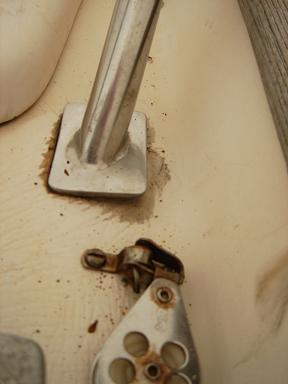
December 2008. New Bedford, USA. Pulpit, pushpit and stanchions
The pulpit is bent on the starboard side. As you can see on the picture, its base does no longer sit at the deck. It was sealed with a silicon but is likely leaking.
All stanchions, pushpit and pulpit need polishing and lemon oil.
The teak rail on the bulwark needs cleaning and varnishing. The same applies to the teak rails on the cabin top and the companion way.
April 2009. New Bedford, USA. Bow rail as they call it here
Niemiec Marine refused to fix my pullpit and suggested nearby Ocean Marine Fabricators. Steve had no problems with replacing the bended part of the bow rail and did an excellent job for two hour labour charge of $150.
Cockpit grating
The grating in the cockpit had a cutout for the Edson pedestal, which I threw away. I ordered couple of 6-foot teak timbers from West Marine to replace the short planks with long ones. I also drilled four holes in the cockpit floor and epoxied four 3-inch bolts sticking out from underneath of the engine compartment and to be used for securing the grating from above the deck with nuts.
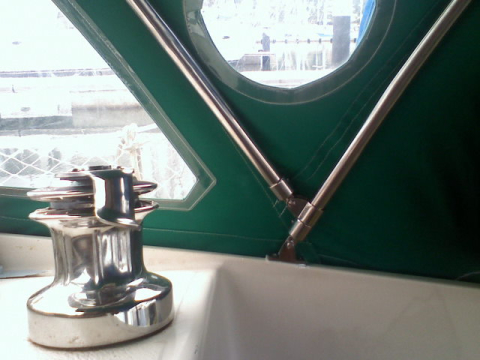
October 2010. St. Lucia. New dodger SS frame

December 2011. St. Lucia. New Railing
Lifelines have torn apart twice now. So, finally I got rid of them and put new stainless 1-inch tubing instead using existing stanchions and various connectors such as 90-degree elbow and t-type. This one day project cost me in St. Lucia around $500US.
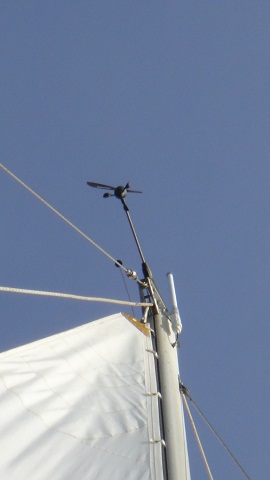
March 2012. Curacao. Wi-Fi Router
IslandTimePc sells Ubiquity Bullet 2HP Wi-Fi router with a direct-attached antenna, hence no signal loss. The router is very compact and waterproof. 12-volt power is injected into the Ethernet cable. Hence, there is only one CAT-5 PoE wire that goes through the mast. Inside the cabin. CAT-5 is connected to another Wi-Fi router like an ordinary DLink one but also 12-v powered for convenience. All onboard computers, notebooks, hand-held, etc are connected wirelessly to this router.
I was this setup first on Hippie Hip sailboat in Canaries, when I was helping to configure the system. I like the idea and decided to install the same system on my boat. It works great! The router on the mast is configured through the web interface: just scan for available networks, select, press Change and Apply. And everybody on the boat has Internet!
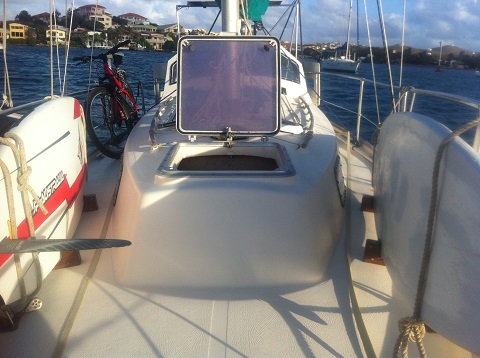
February 2016. Curacao. Windsurfing board holders
I purchased one second hand board (JP Australia, 110L) in good conditions, and we found another one (Mistral, 120L?) broken on a beach. I fixed it and painted. To keep them both on board when sailing and protect the deck and the boards, I made wooden holders secured to the deck.
May 2023. Auckland, New Zealand. Starlink dish
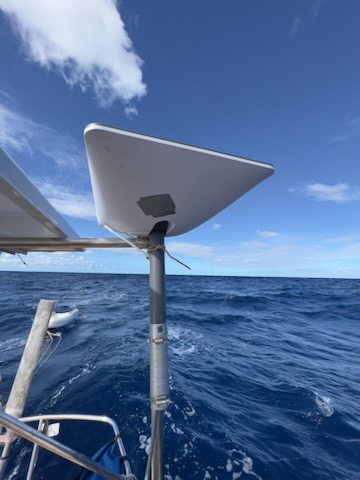
Just before leaving New Zealand, I purchased a Starlink dish. I permanently mounted it on the solar panel railing later in New Caledonia. Starlink comes with its own Wi-Fi router, which is powered from 220 v AC and does not have an Ethernet port. I didn't want to run it from an inverter and I wanted to use Ethernet cables as well. Hence, I powered it from a 12-to-48 volt DC up-converter, via 8-wire PoE injector, which I connected to my old Huawei Wi-Fi router, which had an Ethernet WAN port. Starlink had non-standard Ethernet wiring, so I needed to buy Ethernet jacks and crimp them using some Internet references. I also disconnected Starlink dish motors by drilling a hole in its body and unplugging the wires from a board. There are plenty of Internet resources that claim the dish works better in horizontal position without motors.
I removed my old Wi-Fi antenna as it became less useful. It was also old and did not work well with new access points, especially with open ones that require to login later via a web interface.
I left my windsurfing boards in New Zealand. Therefore, the holders have been removed from the deck.

